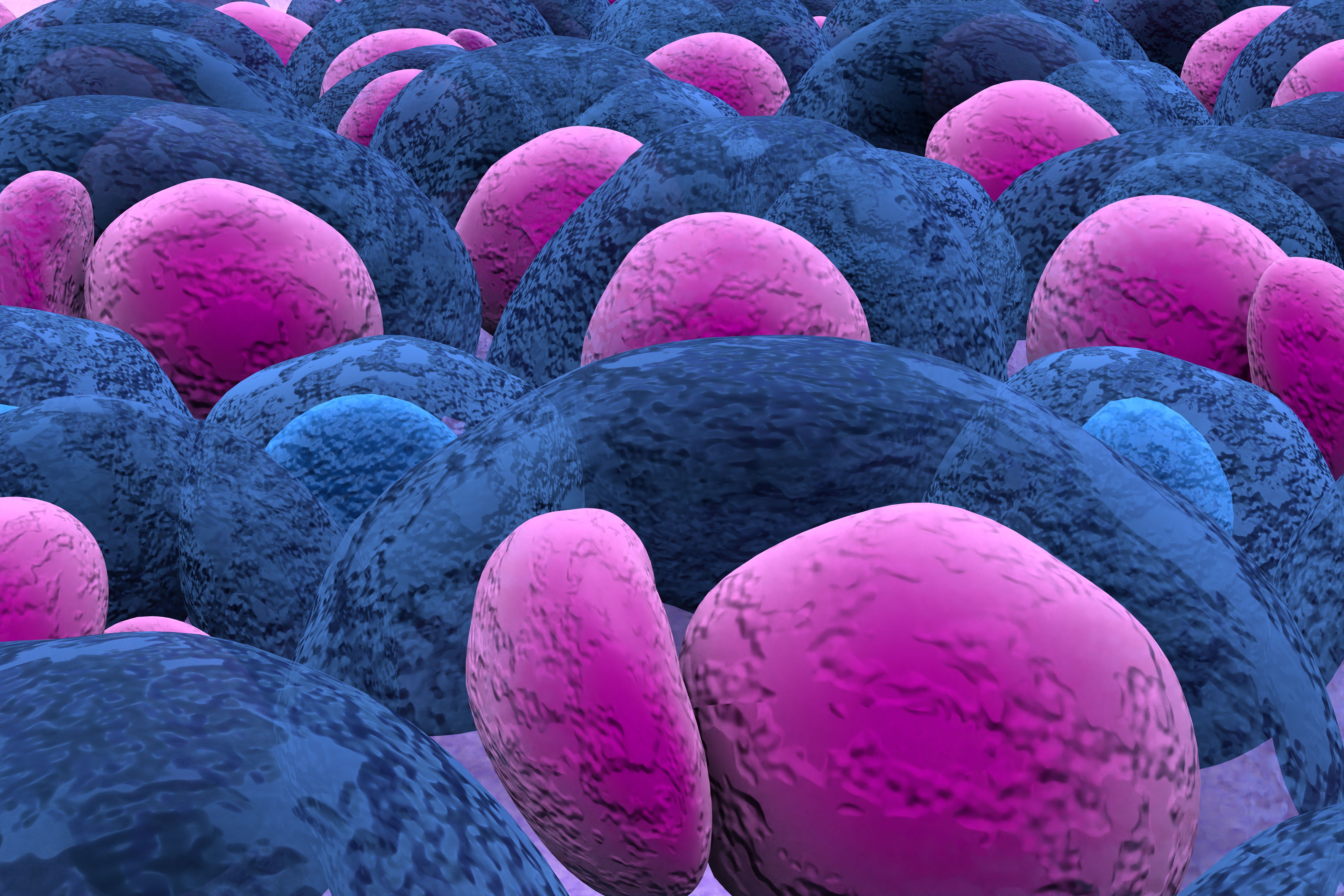Dual Bispecific Combination Study Shows 96% Overall Response Rate in Relapsed/Refractory Multiple Myeloma
Findings highlight the potential efficacy of combining 2 novel bispecific therapies, teclistamab-cqyv and talquetamab, which target distinct antigens on myeloma cells.
The first-ever results from the phase 1b study of teclistamab-cqyv (Tecvayli, Janssen) and talquetamab showed a high overall response rate (ORR) among patients with relapsed or refractory multiple myeloma (RRMM).
Credit: LASZLO - stock.adobe.com

These findings highlight the potential efficacy of combining the 2 novel bispecific therapies, which target distinct antigens on myeloma cells. Teclistamab-cqyv is a first-in-class BCMAxCD3 bispecific antibody, whereas talquetamab is a first-in-class GPRC5DxCD3 bispecific antibody.
“By combining teclistamab and talquetamab, 2 bispecific antibodies that have demonstrated high efficacy responses in targeting distinct antigens, we evaluated the potential of this unique combination regimen for patients who were resistant or refractory to multiple lines of therapy,” said principal study investigator Yael Cohen, MD, in a press release. “The high overall response rates characterized in this study are encouraging and support the continued evaluation of this regimen as a combination therapy.”
According to the findings presented at the American Society of Clinical Oncology (ASCO) 2023 Meeting, the investigational combination demonstrated an ORR of 86.6% across all dose levels, and an ORR of 96.3% among patients receiving the recommended phase 2 regimen (RP2R).
The RedirecTT-1 study included patients who received a median of 4 prior lines of therapy. At the RP2R, 76.5% of patients were triple-class refractory to an immunomodulatory drug, proteasome inhibitor, and anti-CD38 antibody; 58.8% were penta-drug exposed to 2 immunomodulatory drugs, 2 proteasome inhibitors, and an anti-CD38 antibody; and 32.4% had extramedullary disease, all of which were soft tissue plasmacytomas.
Results showed high response rates across all dose levels, based on 82 patients across all study cohorts and 27 patients treated at the RP2R who were evaluable for response. The ORR across all patients was 86.6% and patients who received the RP2R achieved an ORR of 96.3%. The median duration of response was not reached in the overall population or the RP2R cohort.
Patients with extramedullary disease who received the RP2R achieved an 85.7% ORR and median duration of response was not reached at a median follow-up of 7.2 months. The median follow-up for all patients was 13.4 months with a median progressive-free survival (PFS) of 20.9 months. The median follow-up for patients receiving the RP2R was 8.1 months and median PFS was not estimable for patients in the RP2R cohort. At data cutoff, 61% of all patients remained on either teclistamab-cqyv or talquetamab.
In the study, 94.1% of patients at the RP2R and 96.8% of the overall study population had 1 or more treatment-emergent adverse events (TEAEs). Rates of grade 3 or 4 nonhematologic AEs were low in both the full study population and the RP2R cohort, except for cytokine release syndrome (CRS) of any grade, which occurred in 76.3% and 73.5% of patients, respectively. All CRS events were resolved at data cutoff and the incidence and severity of CRS were consistent with teclistamab-cqyv and talquetamab monotherapy treatment. The most common hematologic AEs, observed in 20% of patients or more, were neutropenia, anemia, and thrombocytopenia.
“Multiple myeloma becomes progressively more difficult to treat as patients relapse or become refractory to treatment,” said Arnob Banerjee, MD, PhD, global medical head of Early Development Oncology at Janssen Research & Development, LLC, in the press release. “The RedirecTT-1 data suggest the use of bispecific antibodies with high activity in melanoma, Tecvayli and talquetamab, may have potential to yield high efficacy responses in this patient population.”
REFERENCE
Janssen Presents First-Ever Results from Dual Bispecific Combination Study Showing 96 Percent Overall Response Rate in Patients with Relapsed or Refractory Multiple Myeloma. News release. Johnson & Johnson. June 3, 2023. Accessed June 5, 2023. https://www.jnj.com/janssen-presents-first-ever-results-from-dual-bispecific-combination-study-showing-96-percent-overall-response-rate-in-patients-with-relapsed-or-refractory-multiple-myeloma
